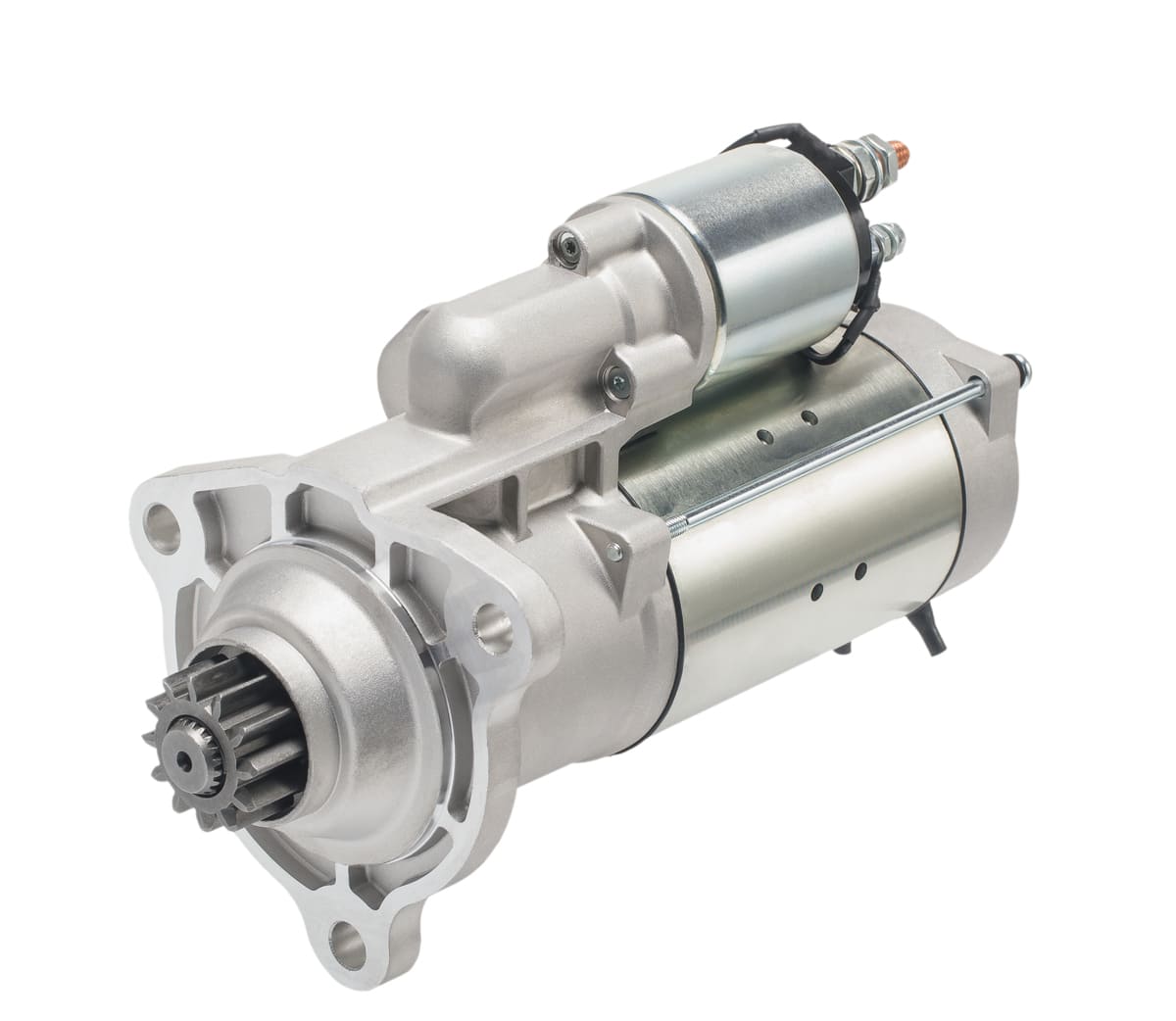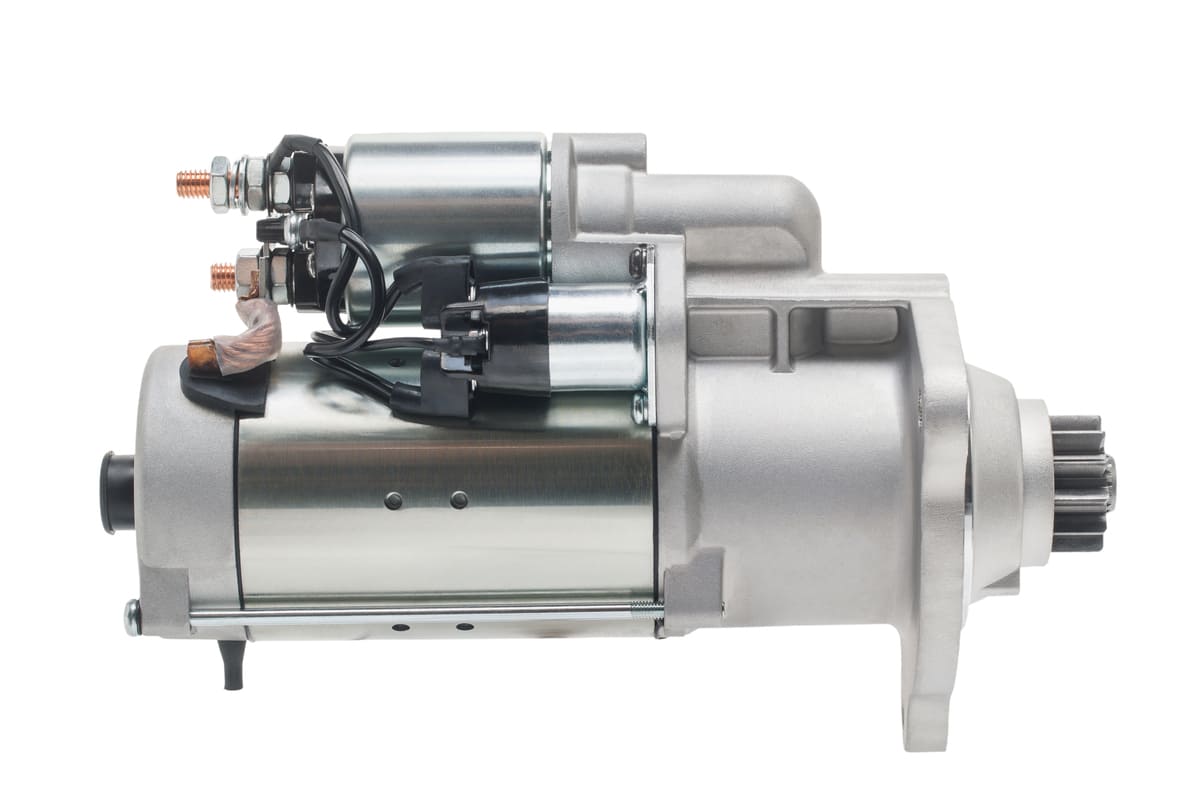The starter motor turns the flywheel to start the engine by giving the initial crank. Its design and efficiency is crucial for the to start quickly and run smoothly in all conditions.
What is a Starter (engine)?
A starter motor is a small device in a car. It helps start the engine. When you turn the key or press the start button the starter motor gets power from the .
The starter motor uses this power to turn the engine’s flywheel. This makes the engine start working. Without the starter, the engine can’t start on its own.
The starter motor is usually located near the engine. It’s connected to the car’s electrical system. Modern cars have reliable and efficient starters so it’s easy to use.
In some vehicles, the starter motor uses gears to connect to the engine. These gears help turn the flywheel with enough force. This design makes the engine start quickly and smoothly.
If the starter motor fails the car won’t start which can be a big problem. Regular maintenance can help keep the starter motor in good condition.
References
- Electric Starter (engine). Wikipedia. Retrieved from
- Starter Motor. ScienceDirect. Retrieved from
What is the History of the Starter (engine)?
There are several types of engine starters. Each type is for different vehicles and engines. Here are the main types:
Electric Starter: This is the most common type in cars today. It uses electrical power from the battery to turn the engine’s flywheel to start the engine quickly and easy.
Pneumatic Starter: This type uses compressed air to start the engine. It’s found in big diesel engines and some aircraft. The compressed air spins the engine to start it.
Hydraulic Starter: This starter uses hydraulic pressure to turn the engine. It’s more reliable and efficient so it’s suitable for heavy machinery and industrial applications where electric starter is not practical.
Inertia Starter: This type uses a wound-up spring to store energy. When released, the spring will turn the engine. These starters are found in older or specialized equipment.
Manual Starter: Also known as hand cranks, these are very basic and requires physical effort to start the engine. They were common in old cars but are mostly obsolete now.
Each type of starter has its own advantages and specific uses, suitable for different engine and vehicle design.
References
- History. Wikipedia. Retrieved from
What are the Types of Starters (Engines)?
There are several types of engine starters. Each type is for different vehicles and engines. Here are the main types:
- Electric Starter: This is the most common type in cars today. It uses electrical power from the battery to turn the engine’s flywheel to start the engine quickly and easy.
- Pneumatic Starter: This type uses compressed air to start the engine. It’s found in big diesel engines and some aircraft. The compressed air spins the engine to start it.
- Hydraulic Starter: This starter uses hydraulic pressure to turn the engine. It’s more reliable and efficient so it’s suitable for heavy machinery and industrial applications where electric starter is not practical.
- Inertia Starter: This type uses a wound-up spring to store energy. When released, the spring will turn the engine. These starters are found in older or specialized equipment.
- Manual Starter: Also known as hand cranks, these are very basic and requires physical effort to start the engine. They were common in old cars but are mostly obsolete now.
Each type of starter has its own advantages and specific uses, suitable for different engine and vehicle design.
References
- Pneumatic Starter. Wikipedia. Retrieved from

How Does a Starter (engine) Work?
A starter motor starts a car’s engine. Here’s how it works:
Step 1: Turn the Key or Press Start: When you turn the ignition key or press the start button, you send an electrical signal to the car’s battery.
Step 2: Power to the Starter Motor: The battery sends electrical power to the starter motor through thick cables. This power will make the starter motor alive.
Step 3: Engage the Flywheel: The starter motor has a small gear called a pinion. This pinion gear moves forward and engage with the engine’s flywheel gear.
Step 4: Turn the Flywheel: Once engage, the starter motor will spin the pinion gear. This will turn the flywheel which will turn the engine’s crankshaft.
Step 5: Engine Runs: As the crankshaft turns, the engine will run on its own fuel and air mixture. The starter motor has done its job and the pinion gear will retract.
Step 6: Disengage the Starter Motor: After the engine starts, the pinion gear will go back to its original position. The starter motor will stop running and will disconnect from the flywheel.
All this will happen in just a few seconds. The starter motor is the key to a smooth and efficient engine.
References
- A Guide to What a Starter Motor Is and How It Works. Medium. Retrieved from
- How the Starting System Works. How a Car Works. Retrieved from
What are the Components of Starter?
A starter motor has several parts. Each part plays a vital role in starting the engine. Here are the main parts:
- Armature: The armature is the rotating part of the starter motor. It has coils of wire that carries electric current, creates a magnetic field to turn the motor.
- Commutator: The commutator is attached to the armature. It helps to transfer electrical power from the battery to the armature through carbon brushes.
- Brushes: Brushes are small carbon pieces that make contact with the commutator. They help to conduct electricity to the armature so it can spin.
- Solenoid: The solenoid is an electromechanical switch. When you turn the ignition key, the solenoid will send electrical power to the starter motor and push the pinion gear to engage the flywheel.
- Pinion Gear: The pinion gear is a small gear on the starter motor. It will engage with the engine’s flywheel gear to turn the engine and start it.
- Flywheel: The flywheel is a large-toothed attached to the engine’s crankshaft. The pinion gear will mesh with the flywheel to turn the engine.
Field Coils or Permanent Magnets
These will create a magnetic field inside the starter motor. Field coils are electromagnets, some starters use permanent magnets for this purpose.
Drive Shaft
The drive shaft connects the pinion gear to the starter motor. It will transmit the torque to turn the flywheel and ultimately the engine.
Each part of the starter motor will work together to start the engine fast and efficiently.
References
- Starter Motors. Autoelectro. Retrieved from https://www.autoelectro.co.uk/starter-motors


